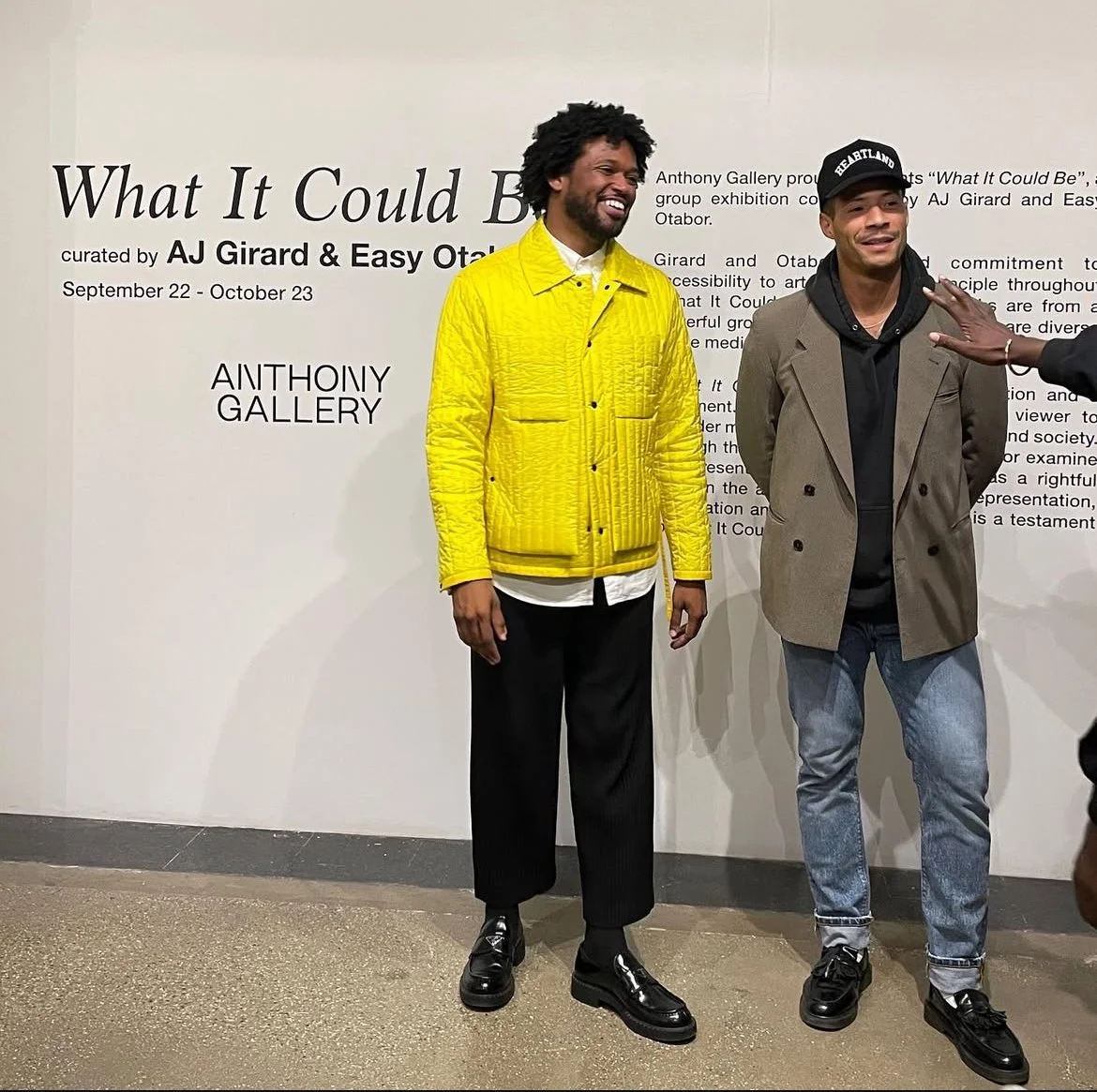Rights reserved to owner
Antoine Girard, a Howard University graduate, is a visionary art curator recognized for elevating emerging artists and reimagining the narratives within contemporary art. Driven by a deep passion for cultural storytelling and a keen eye for undiscovered talent, he curates exhibitions that connect communities and challenge convention. His work sparks dialogue, defies expectations, and reshapes the way audiences engage with art.
Art wasn’t naturally a part of your upbringing, sports was. But that didn’t stop you as you were an active seeker of its history. Today you are an Art curator, what sparked your interest in turning your curiosity into a career? And for people who might not understand your curatorial skills, what does an art curator actually do day to day?”
AJ: I'm always reminded back when I was younger how I was also a creative spirit—there was something about me that my parents just sort of identified. It wasn't that I was super anti-sports; it was just that I didn't fit into that space. I was always pondering at trees or drawing on something, maybe a little bit reserved. I think this was before we even knew what an extrovert or introvert was. There was just something about me that didn’t feel complete until I got into art spaces.
We moved from LA to Texas, and I discovered Arts Magnet in a high school called Booker T, which was Dallas's first all-Black high school. Then it turned into the Arts Magnet, and you had to sort of apply. I applied, and I originally moved still kind of in my shell, and then over time, I became who I was supposed to be. My whole energy shifted. My stride was taller, my voice was louder, and I knew this was something that I wanted to pursue.
For those who are reading this—I had no clue what to do, how to start, what it was. And I just started to go to museums. I would take myself to spaces, and I would look for art. I would look for art that looked like me—Black art.
I started to apply for museums, and very nervously, I worked in those spaces for years—probably like five or six. It’d be interesting because I’d almost even say for too long, you know, because I kind of wanted to be in that box and I wanted to be safe in that box. And then curatorial work was my push out of that box. It was like, “Okay, you know what the game is now—so what are you adding to it? What’s your voice? What are you saying?”
So during the pandemic, I shifted into that role, created a show, which was very successful for me. Day to day, I have to learn—like anything—when you're pushing yourself in a creative space, you're sort of the first to pioneer something different. I'm not the first art curator, but I definitely didn’t grow up seeing Black men or a lot of folks in that space. I knew of Thelma Golden and people like that, but I was trying to figure out what it meant.
I took on shows—some that I really, really resonated with, some that I just sort of did—but I understood that it's a 24/7 general listening and learning and looking and being in community with people, artists. Studio visits are important. Traveling is important for my role. You have to know what's happening in the world. It's almost like you have to be a listener—just with artists. You have to understand what their interests are so you can communicate it to an audience.
(All rights reserved to owner)
Your role involves supporting both the artist and the collector, which can sometimes mean juggling very different expectations. How do you navigate that balance and keep both sides feeling seen and supported?
AJ: I go back to listening, for sure. I think that the collectors I work with—whether they are an up-and-coming couple who is well off and just wanting to start decorating their home—their number one concerns are generally, “Hey, I want my family and my kids to grow up around art that is hopefully enriching. Something that will allow them to feel seen and represented in their own space.”
We all had that one painting in our minds—our ingrained memory—whether it was at a grandma’s house or wherever. So I think I work with artists, generally speaking, to help them find their people. Their job is to communicate to that canvas or sculpture and to really put their ideas into that space—and then it kind of ends.
Those objects don’t have voices. So I try my best to use my voice—my understanding of history, my listening to collectors’ interests—to find that voice that resonates.
“Those objects don't have voices so I try my best to use my voice, my understanding of history, my listening to collectors interest and to find that voice that resonates.”
- AJ Girard
You enjoy working with up-and-coming artists, which is expressed during a 2021 interview in which you stated, “Why would we start and pick it up from the same power structures that previously existed? Let’s make space for everyone to do their thing and to be powerful.” , What is it about uplifting new talent and pushing back on the way things have always been that really drives you?
AJ: I remember having this conversation with another curator, Antoine Sargent. He said, “AJ, you really like to deal with the immediate now. You're really interested in what's happening in the world right now—the arguments that are developing right now.”
Oftentimes, when you look at art, most of the artists we know have passed on. It's a lot easier to categorize and historicize an artist who has, unfortunately, passed away. I think what I'm really excited about is working with artists who—at any moment—can take a left or a right, stop what they’re doing, turn around, burn the canvas, add more.
I think they’re also just responding to the world, our curiosities, and our fears right now. The artists I’ve been able to work with, especially for that show, were so pivotal for us at that time because we had just come out of the pandemic. There was all this cultural shifting—uprisings, fear of being in community with people again—who’s safe or healthy to be around, who’s not.
I think these artists were able to help us unpack so many generational traumas that were really existing in the Black and Brown communities. I’m always looking for artists who are responding to what’s next. And that’s really scary too—who knows? But we have to look to the artist for direction.
Art curator AJ Girard (L) and Artist Easy Otabor (R) (All rights reserved to Owner)
What advice would you give to artists looking to exhibit their work in gallery shows? What skills should they focus on developing in the meantime as they wait for their opportunity?
AJ: I find it a little irresponsible when artists claim they don’t look at other artists or history—that they just stay in their studio and whatever comes out is what it is. I love talking to artists who understand where their work fits into a broader context. That’s how you separate someone who’s just making things from someone who’s truly practicing. You’ve got to go to shows, attend panels, visit museums—you have to train your eye. And that applies to artists, collectors, and appreciators alike. You won’t know what resonates with you if you don’t experience a wide range of work. And it’s not the art’s job to convince you of its worth. The experience is about you refining your own understanding: what didn’t move you, what felt like it was missing, what you wish you saw more of. That’s what allows you to return to your own practice and say, “Here’s what I’m adding to the conversation.”
When I meet artists who work from that place of reflection and awareness, I immediately want to collaborate. They get it. On the flip side, I’ve encountered artists who resist any dialogue around their work—sometimes because it’s deeply personal, sometimes because they’re convinced it’s already a masterpiece. And that’s fine, but to me, what matters is the intersection of art, education, and intention. How can this piece help people feel seen, be elevated, or inspired? That’s how we move art out of isolation and into lives. None of us exist on an island—we are built for community and connection. So in my work, that’s the mission: to bring art from the margins into the center, from private studios into public hearts. And I’m doing my best to keep making that happen.
What role does representation play in helping the next generation believe that their dreams and aspirations are truly possible?
AJ: I didn’t grow up spending Saturdays in museums, being quizzed on artists, time periods, or art movements. That wasn’t my upbringing. But what I did have was a mom who was endlessly supportive, incredibly patient, and truly my muse. That kind of presence matters. And now, I’ve come to realize how important it is to be present and aware of your surroundings. Every generation is reminded of the same thing—we’ve got to preserve what’s ours. The recipes, the rhythms, the essence, the aura. We hold the responsibility to keep our stories, our culture, and our beauty intact. It begins with us and ends with us.
That’s something I wish I had truly believed the first time I walked into a museum—that I belonged, that I mattered. This archive and this conversation are about reclaiming that space. It’s our way of sending a signal out into the atmosphere saying, “We’re here, and we matter.” And for whoever is reading this—whether you’re creating, studying, developing—you’re part of that too. You’re contributing to the legacy because you’re paying attention, you’re listening, and you’re showing up. We need to see ourselves in every role, in every corner of these institutions, because too often we’re made to believe we don’t exist in any of them. But we do, and we always have.
Want to hear more amazing stories like this? Check out our “More of Us” series! If you want to connect with Antoine and support the work he is doing, follow him on social @_ajgirard.



